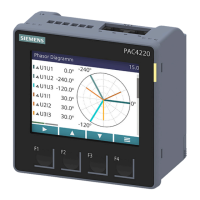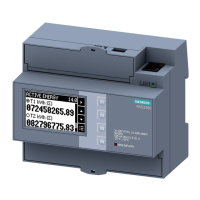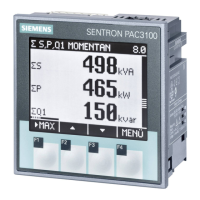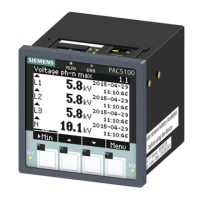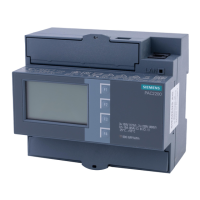Description
3.4 Load profile
SENTRON PAC4200
Manual, 09/2008, A5E02316180B-01
31
Rolling block method
The rolling block method divides the demand period into subperiods. The load profile data is
calculated and stored at the end of each demand period or subperiod.
'HPDQGSHULRG
'HPDQGSHULRG
'HPDQGSHULRG
'HPDQGSHULRG
(QGRI
VXESHULRG
(QGRI
GHPDQGSHULRG
'HPDQGSHULRG
6XESHULRGV
W>PLQ@
Figure 3-4 Load profile, rolling block method
Parameterizing the fixed block and rolling block methods
SENTRON PAC4200 supports the fixed block method as a special case of the rolling block
method. The most important distinguishing feature is the number of subperiods.
Number of subperiods:
The demand period can be divided into a maximum of five subperiods.
● The number "1" defines the fixed block method. In this case, the length of the subperiod
is identical to the length of the demand period.
● The numbers "2" to "5" define the rolling block method.
Length of subperiods:
The length of a subperiod is an integer part of a full hour. The device allows the following
lengths in minutes:
1, 2, 3, 4, 5, 6, 10, 12, 15, 20, 30, 60 min
Length of demand period:
The length of the demand period cannot be directly configured. It is defined as the product of
the length of a subperiod and the number of subperiods.
Length
demand_period
= n • length
subperiod
; n = number of subperiods
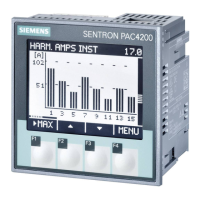
